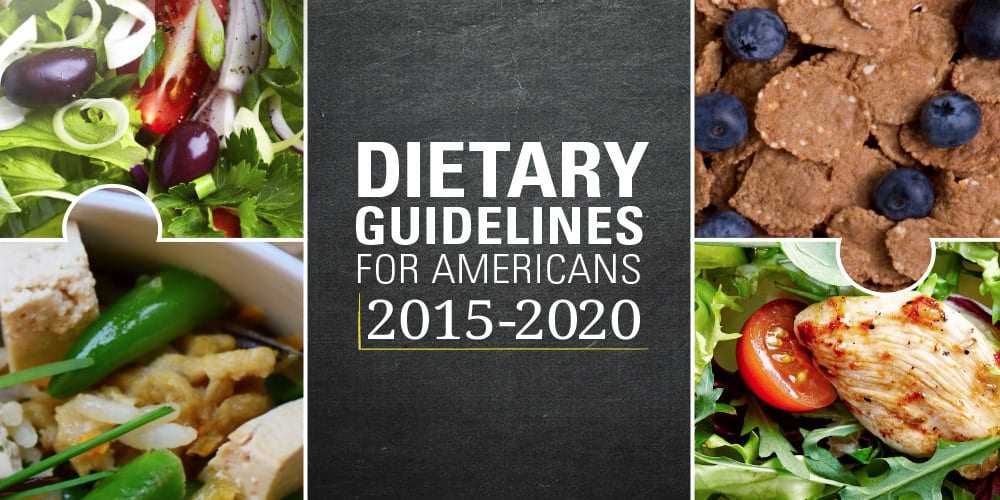U.S. Announces New Dietary Guidelines
The United States Department of Agriculture and Department of Health and Human Services released the eighth edition of the Dietary Guidelines for Americans on January 7, aimed at promoting healthy eating habits to reduce risk of chronic diseases. The guidelines recommend consuming less than 10 percent of calories per day from added sugars and saturated fats, as well as reducing sodium intake to less than 2,300 milligrams per day.
The United States Department of Agriculture and Department of Health and Human Services have released the eighth edition of its Dietary Guidelines for Americans on January 7.
Updated every five years, the Guidelines incorporate current scientific and medical knowledge to improve health and reduce risk of chronic diseases by promoting healthy eating habits of Americans. According to the report, “About half of all American adults have one or more preventable, diet-related chronic diseases, including cardiovascular disease, type 2 diabetes, and overweight and obesity.”
Unlike previous guidelines that recommended consumption of food groups and nutrients, the 2015 – 2020 Dietary Guidelines focus on healthy eating patterns. The aim is to give Americans greater flexibility in terms of choosing a diet that would work for them in terms of meeting their individual preferences and nutrient needs.
The healthy eating pattern includes the usual list of foods to include in the diet such as dark green, red and orange vegetables, fruits, legumes, whole grains, low-fat or fat-free dairy products, nuts, seeds, soy products, lean meats, poultry, eggs, and seafood. The key recommendations, however, emphasizes healthy eating as a lifestyle change that would help maintain a healthy weight and lower risk of chronic diseases.

Americans consume more than the recommended amounts of added sugars, saturated fats and sodium. In view of this, the new guidelines recommend consuming less than 10 percent of calories per day from added sugars. This amount would come from a 16-ounce soda drink for a 2,000-calorie diet, according to Tanya Zuckerbrot, a registered dietitian in New York City. A better choice would be to drink plain water instead of sugar or artificially sweetened beverages. The guidelines specify that if artificially sweetened beverages are consumed, intake of the sweeteners should not exceed acceptable daily limits set by the FDA.
The 2015 – 2020 Dietary Guidelines also recommend an intake of less than 10 percent of calories per day from saturated fats. This means replacing most saturated fats in the diet with unsaturated fats such as olive oil, sunflower oil, soybean oil, flax seed oil and nuts, which are associated with lowered risk of heart attacks due to the presence of monounsaturated and polyunsaturated fats.
See Also:How to Pair Olive Oil with Foods
The recommendations also include reducing sodium intake to less than 2,300 milligrams per day as higher intakes are associated with high blood pressure.
To translate the recommendations in the guidelines into practical advice, the 2015 – 2020 Dietary Guidelines include three Healthy Eating Food Patterns: the Healthy U.S.-Style Eating Pattern; the Healthy Mediterranean-Style Eating Pattern; and the Healthy Vegetarian Eating Pattern. Personal variations and preferences to any of these dietary patterns with other nutrient-dense foods and appropriate portion sizes can help Americans meet their nutrient needs from their diet.
The Healthy U.S.-Style Eating Pattern, most similar to the healthy eating dietary pattern recommended in the 2010 Dietary Guidelines, is based on foods typically consumed by Americans. Consuming the nutrient-dense forms and amounts of the foods recommended in this eating pattern will enable individuals to meet their requirements for essential nutrients.
Two newer USDA Food Patterns included in the 2015 Dietary Guidelines that were not present in previous guidelines are the Healthy Mediterranean-Style Eating Pattern, which is based on the health benefits of the Mediterranean diet, and the Healthy Vegetarian Eating Pattern for those opting to eat a plant-based diet.
The Healthy Mediterranean-Style Eating Pattern, a modified form of the Healthy U.S.-Style Eating Pattern, recommends consuming more seafood and fruits, and less dairy such as those consumed on a Mediterranean diet.
The Healthy Vegetarian Eating Pattern is the third healthy eating pattern for individuals who abstain from eating meat, poultry or seafood. This pattern includes a higher consumption of legumes, soy products, seeds and nuts, while intake of other food groups remains the same as the Healthy U.S.-Style Eating Pattern.
While the new Dietary Guidelines provide recommendations that policymakers, health-care and professionals can use to promote healthy eating, the guidelines can help Americans make the right food and beverage choices to reduce their risk of diet-associated chronic diseases.







